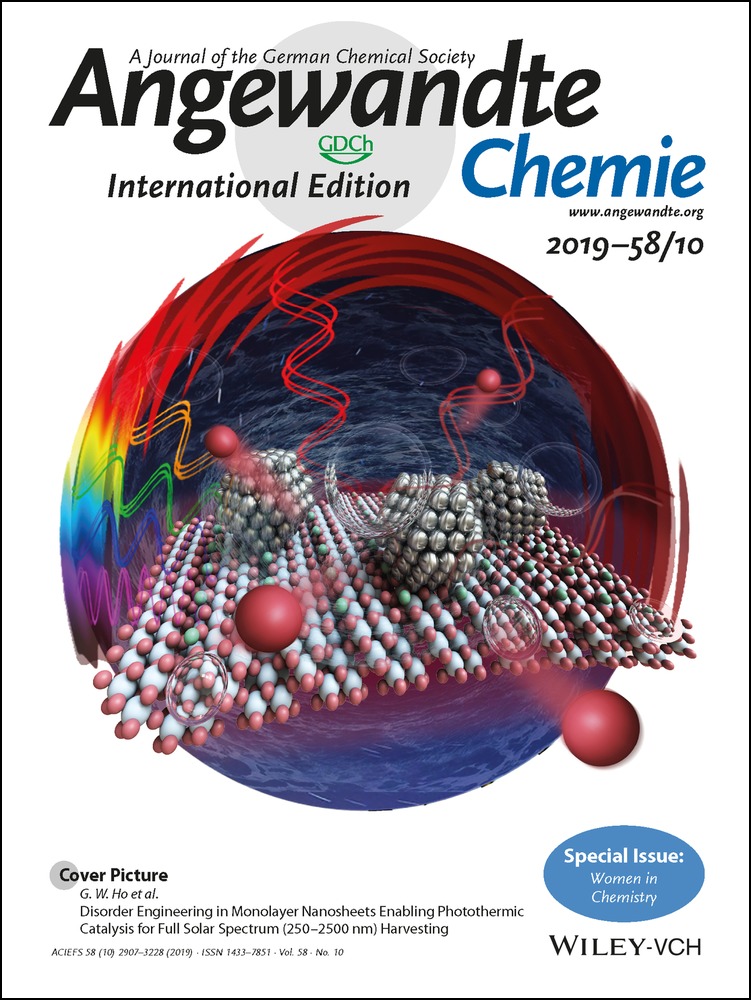Visible-Light-Driven Overall Water Splitting Boosted by Tetrahedrally Coordinated Blende Cobalt(II) Oxide Atomic Layers
Graphical Abstract
Tetrahedrally coordinated blende CoO and octahedrally coordinated rocksalt CoO atomic layers with similar thicknesses were synthesized. The blende CoO atomic layers achieve boosted visible-light-driven H2 and O2 formation rates that are roughly 3.7 times higher than those of the rocksalt CoO atomic layers.
Abstract
Directly splitting water into H2 and O2 with solar light is extremely important; however, the overall efficiency of water splitting still remains extremely low. Two types of ultrathin semiconductor layers with the same elements and the same thicknesses were designed to uncover how different atomic arrangements influence water-splitting efficiency thermodynamically and kinetically. As an example, tetrahedrally coordinated blende and octahedrally coordinated rocksalt CoO atomic layers with nearly the same thicknesses were synthesized for the first time. The blende CoO atomic layers have a smaller Eg and abundant d–d internal transition features relative to the rocksalt CoO atomic layers, which ensure enhanced visible-light harvesting ability. Density functional theory calculations reveal that the Bader charge for Co atoms in blende CoO atomic layers is larger than that of the rocksalt CoO atomic layers, which facilitates photocarrier transfer kinetics, as verified by photoluminescence spectra and time-resolved fluorescence emission decay spectra. In situ FTIR spectra and energy calculations reveal that the *OOH dissociation step is the rate-limiting step, where the blende CoO atomic layers possess a smaller *OOH dissociation energy thanks to their higher Bader charge and stronger steric effect, as confirmed by the elongated Co−OOH bonds. The blende CoO atomic layers exhibit visible-light-driven H2 and O2 formation rates of 4.43 and 2.63 μmol g−1 h−1, roughly 3.7 times higher than those of the rocksalt CoO atomic layers.





